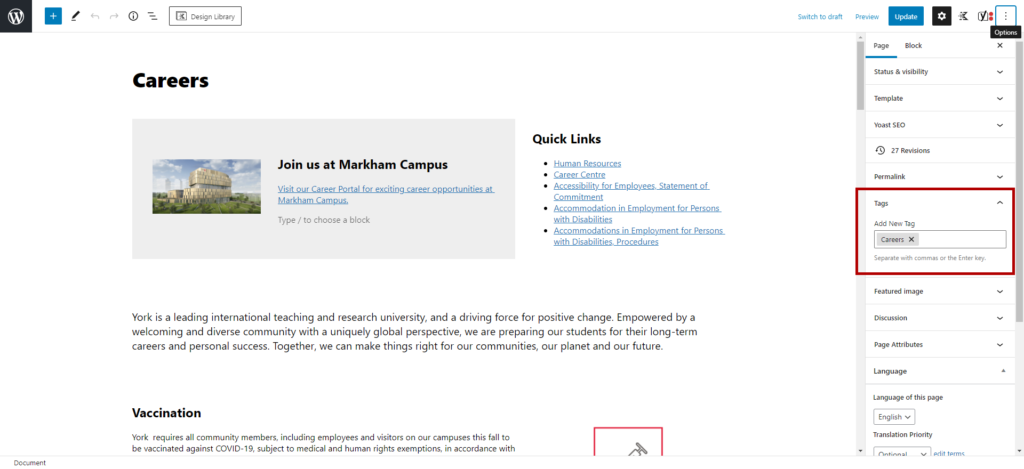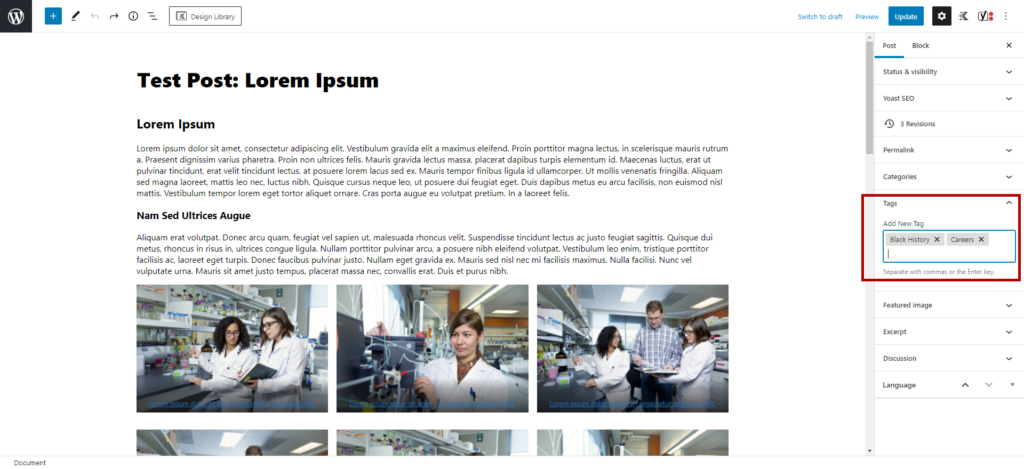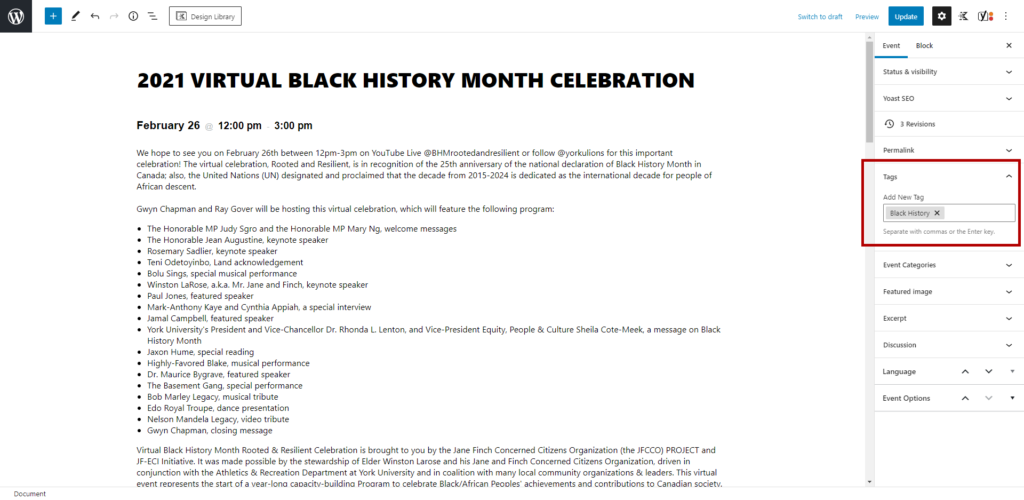Rationale
As part of the web optimization process, there is a need to ensure that terms used in Search are consistent across all York-related digital properties, and follow a pre-determined set of rules. The pan university tagging and taxonomy strategy is as much about SEO as it is about UX and site functionality. This is a brand challenge and we need to put students (and/or first-time visitors) first in all that we do.
Tagging key webpages should be complete by April 30, 2022. Any new webpage or website created must include this within the project.
Training Resources
- Taxonomy Overview - ICMC [PPT]
Goals
Help classify and codify the types of information we present to all our key stakeholders
To improve internal search experience Facilitate non-hierarchical discovery across the network of York campuses, faculties, and organizations through tags.
Creating discovery, interest and engagement though the process of linking concepts and needs of content created by different site managers.
Outcomes
Building taxonomic ranking system that site managers can use to tag page with a simple, but with a consistent formula. These tags focus on the audience perspective and what they would be searching vs internal jargon.
Improving internal (and external) search experience and results so users find the right content.
What is Taxonomy
Taxonomy in web design is a system used to classify objects; content, pages, contacts, and navigational structures. It's used to define relationships and similarities among the set of descriptive terms and labels. Taxonomy is a system ordering of the smallest non-divisible content elements that span our wide range of site content. Tags help classify that content from pages, news stories and event listings and highlights some of the consistent terms between content or what audiences are searching for.
Implementation on York websites
1
Following the tagging discovery questions below. Highlight the amount of tags relevant to each page on your website.
2
Use the tagging functionality available on pages, news and events and insert the previously identified tags from step 1.
3
Review tags on a regular basis to ensure they are accurate or need to be updated based on target audience search or newly identified keywords.
Instructions for adding tags to individual content types
Tagging Discovery Questions
These questions were the outcome of testing taxonomy types on unique pages from across the York content ecosystem following hierarchal information and qualitative informal heuristic strategies. These tags are not a complete SEO strategy, and are instead one component of a completely optimized website. As well as adding tags website owners must ensure that the content on the page incorporates key words, is AODA compliant, has updated the Yoast information, and are serving the audience needs. For more information about SEO, visit this page.
Note - tags listed below are not a complete library and only a sample of some of the terms that can be used to define content. Where applicable, use the consistent terminology, otherwise as the target audience experts for your area, add additional tags as necessary.
What we know & wayfinding
These questions represent hierarchal information that helps define user navigation and are based on information already found on the page.
User needs & heuristics
These questions represent qualitative informal heuristic strategies for the recall and synthesis of information based on the publisher’s goals.
Global vs Local Tags
York properties leverage both global tags and local tags. Global tags are consistent and aligned across the entire York web ecosystem via the Tagging Discovery Questions and are focused on improving both search results and categorization, and are required on all major webpages. All information regarding these tags are highlighted on this page. Local tags are unique to a specific environment and follow specific purposes for categorization, and does not impact global search hierarchy.
Local Tagging structures: YFile Tagging Conventions
Training Video
Take a deep dive into tagging, taxonomy and SEO strategy. This training session held on Dec. 9th provided a detailed instruction to the community on the above principles, how they all intersect, how to implement on your York 2020 websites, and guidelines to improve general content creation for search.



